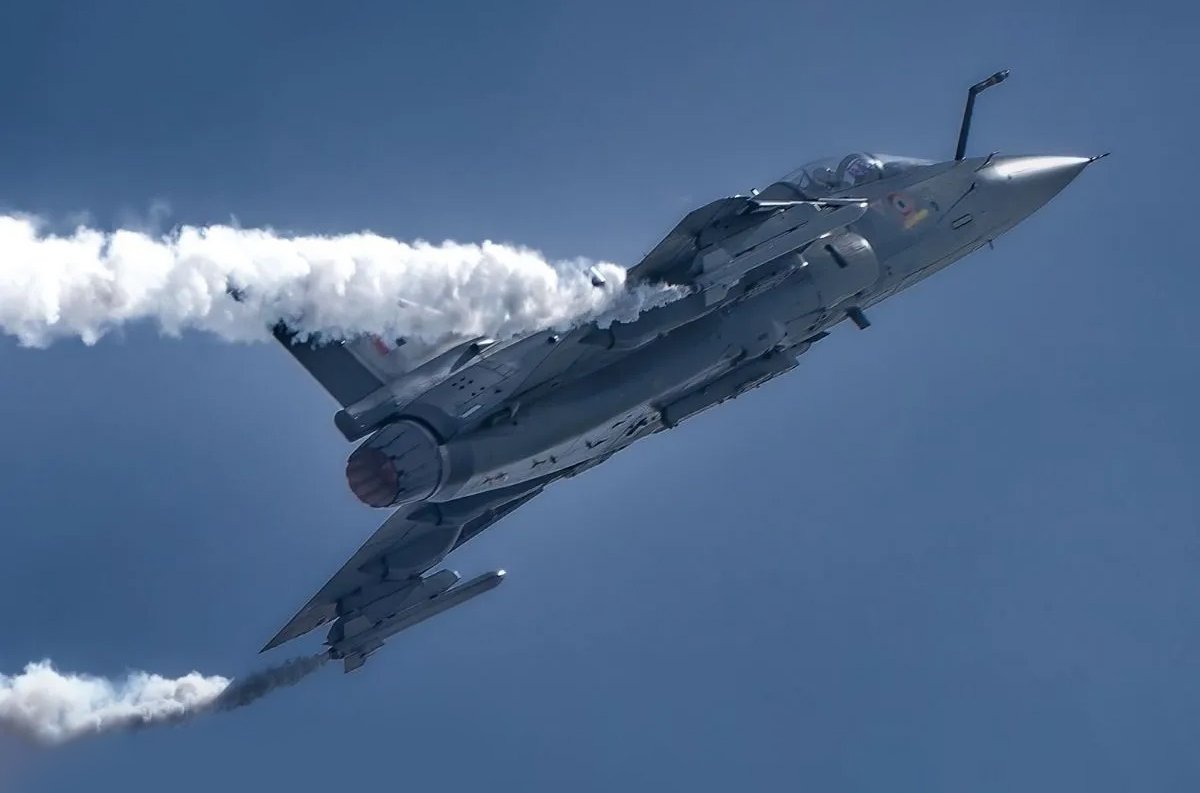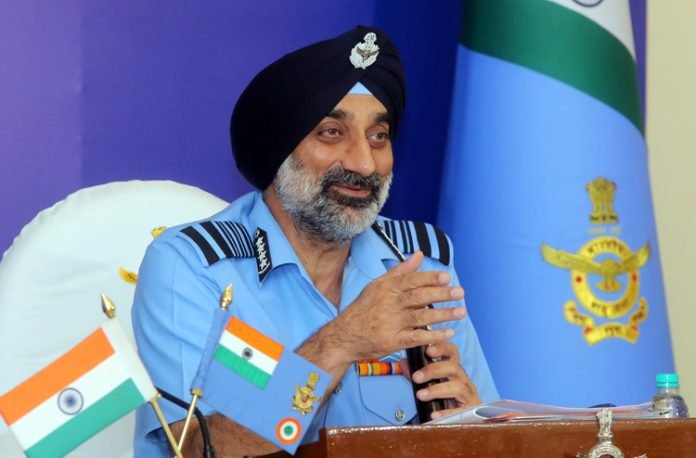Air Chief Marshal (ACM) AP Singh’s rather frank criticism stems from his frustration and to a point he is rather correct in pointing out the flaws of the Indian defence eco system, as it hampers the potential of our servicemen to deliver the best and maximum due to shortage of aircrafts or other ammunition. And it also does not mean that ACM Singh is alone in his criticism.
Just two days before on May 27, 2025 Defence Minister Rajnath Singh urged Defence Public Sector Undertakings (DPSUs) to enhance production of the latest technologies with more focus on research and development in the emerging fields of modern warfare.
Though not in so many words, yet the defence minister urged the DPSUs to focus on timely delivery of products to the armed forces as well as their other customers. Highlighting the role of DPSUs in increasing exports, he directed them to focus more on marketing their products better.
Earlier in January 2025, Defence Secretary Rajesh Kumar Singh had said that India’s defence procurement policy, criticised for delays and inefficiencies, will be reformed within six months to a year. His remarks follow the Ministry of Defence’s (MoD’s) decision to observe 2025 as the “Year of Reforms” and its December announcement that the Defence Acquisition Procedure (DAP) 2020 is “likely to undergo a complete revamp” in 2025.
ACM AP Singh’s rather frank criticism stems from his frustration and to a point he is rather correct in pointing out the flaws of the Indian defence eco system, as it hampers the potential of our servicemen to deliver the best and maximum due to shortage of aircrafts or other ammunition. And it also does not mean that ACM Singh is alone in his criticism
RK Singh described the policy as “broken” and acknowledged that the system had often failed to meet timelines, stressing the need to “call a spade a spade” and adopt a different approach. He said reforms would focus on streamlining timelines and fixing the procurement process to address long-standing issues.
Thursday’s (May 29) remarks represent the latest in a series of increasingly frank assessments by ACM Singh regarding India’s defence-manufacturing performance, particularly HAL’s track record. Earlier during the Aero India exhibition in Bengaluru in February 2025, ACM Singh made what many considered his most damaging statement about HAL’s credibility, “I am just not confident of HAL, which is a very wrong thing to happen.”
During that February interaction with HAL officials, Singh expressed frustration in personal terms: “I can tell you what our requirements and worries are. You have to alleviate those worries and make us more confident. At the moment, I am just not confident of HAL.”
The air chief had been promised that 11 Tejas-Mk1A aircraft would be ready by February 2025, but “not a single one is ready,” leading to his blunt assessment that HAL was “just not in mission mode.”
Prior to that, in October 2024, ACM Singh provided broader strategic context for his concerns, acknowledging that “we have lagged behind China in technology and production rates of defence equipment”. He noted that while India was “better than them in technology also some time ago, we have lagged in that, and we need to catch up.”
This admission highlighted how production delays were not merely operational inconveniences but strategic vulnerabilities affecting India’s relative military capabilities. The air chief marshal’s criticism of HAL’s working culture was particularly pointed, describing an attitude of “ho jayega” (it will happen) and “karenge” (we will do it) that lacked urgency required for military procurement.

The above utterances means that the top leadership of the country is also aware of the shortcomings but is not ready to discuss the shortcomings out in the open. In this background ACM Singh seems to have taken the cudgel to prod our defence production units to perform professionally and he has also given some concrete suggestions in this regard.
The air chief’s remarks are the most direct criticism from a serving military leader regarding systemic failures that continue to undermine India’s military modernisation efforts. His intervention comes as the Indian Air Force grapples with a critical shortage of nearly 200 fighter aircraft and faces the prospect of requiring 450 new jets over the next 15 years to maintain operational readiness against regional threats.
Earlier in January 2025, Defence Secretary Rajesh Kumar Singh had said that India’s defence procurement policy, criticised for delays and inefficiencies, will be reformed within six months to a year. His remarks follow the Ministry of Defence’s (MoD’s) decision to observe 2025 as the “Year of Reforms” and its December announcement that the Defence Acquisition Procedure (DAP) 2020 is “likely to undergo a complete revamp” in 2025
ACM Singh chose the prestigious Confederation of Indian Industry (CII) Annual Business Summit as his platform to deliver pointed criticism of India’s defence-production capabilities. Speaking in the presence of the defence minister, Rajnath Singh, the timing and venue underscored the gravity of his concerns.
“We need to have adequate impetus toward disrupting technology and also though it was said very clearly that ‘incentive doesn’t get you people, it is the environment that gets you people’. But I think to some extent we need to create some incentive, some good environment so that we get the best people for the job,” the air chief said.
“We are not able to get the best people for the job. People are going outward. They are going and working from other countries. I think we need to retain them here by giving them good payment, good incentive, good work environment, maybe some recognition,” he added.
Singh’s comments come in the wake of Operation Sindoor, which he described as a “national victory” that showcased professional coordination across India’s security agencies and armed forces. He said the operation, fought with purpose and supported by domestic capabilities, highlighted the critical need to accelerate both indigenous design and rapid manufacturing.
“We were taking the path of truth, I think God was with us also in this,” he said. “Like it has been said again and again, this was an operation that was executed in a very professional manner by everybody, all the agencies, all the forces…and when the truth is with you, then everything happens on its own.”
The Air Force Chief noted that India must now act with urgency. “We have to be now ready to be future ready. So that is the concern that yes, I can look at the next 10 years we will have certain more output from the Indian industry and the DRDO but what is required today is required today. We need to quickly get our act together…maybe get into some quick Make in India programs so that we can achieve that ‘now ready’ part of it.”
Calling for structural change, he said: “We cannot just talk about producing in India. We need to start designing and developing in India as well. When it comes to producing in numbers, the capacity comes in. So, we need to have this trust between the forces and the industry continued. We need to have the communication continued”
He also warned the industry against overpromising on delivery schedules. “Timeline is a big issue. Once a timeline is given, not a single project that I can think of has been completed on time. So, this is something where we must look at,” Singh said, indirectly referencing delays such as those in the Tejas Mk1A delivery by Hindustan Aeronautics Ltd.
“Why should we promise something which cannot be achieved? While signing the contract itself some of the time we are sure that it is not going to come up but we just sign the contract…we’ve been trying to encourage people but somewhere it’ll break down someday.”
Calling for structural change, he said: “We cannot just talk about producing in India. We need to start designing and developing in India as well. When it comes to producing in numbers, the capacity comes in. So, we need to have this trust between the forces and the industry continued. We need to have the communication continued.”
Singh welcomed the opening up of the Advanced Medium Combat Aircraft (AMCA) programme to private sector participation, calling it a “very big step” that reflects the government’s growing confidence in private industry. He also pushed for higher R&D investment across sectors, invoking the Sikh tradition of Daswant: “10% of our earnings should go back to society. Something like that should go to R&D and defence of the nation.”
ACM Singh has rightly pointed out the future course of action, in order to fulfill the shortfalls and also enhance the offerings of the Indian defence production eco system, which could be boosted by focussing more on Dual-Use Technology, infusion of financial capital by roping or promoting new investment consortiums bringing together financial investors, strategic industry partners, specialised defence acceleration programmes and government stakeholders.
ACM Singh has rightly pointed out the future course of action, in order to fulfill the shortfalls and also enhance the offerings of the Indian defence production eco system, which could be boosted by focussing more on Dual-Use Technology, infusion of financial capital by roping or promoting new investment consortiums bringing together financial investors, strategic industry partners, specialised defence acceleration programmes and government stakeholders
The government should act as a risk mitigator through a first-loss guarantee of 20-25 per cent to protect private investors, matching capital contribution (1:2 or 1:3 ratio), capping asymmetric government returns upside at 1-1.5x to enhance private investor returns and tax incentives for investments in defence funds.
As India ambitiously targets Rs 3 lakh crore in defence production and substantial exports by 2029, startups will become the innovation engine driving self-reliance and establishing global leadership.
What we need at present is the strategic convergence of visionary policies, welded with requirements of the military, enhancing our technological capabilities, and infusing capital, all of which together will determine whether India transforms its security imperatives into technological breakthroughs keeping up with the times.
Operation Sindoor may ultimately be viewed by history as the catalyst that propelled India into the elite circle of nations contributing to a technological future – converting geopolitical necessity into strategic innovation advantage.
-The writer is a New Delhi-based senior commentator on international and strategic affairs, environmental issues, an interfaith practitioner, and a media consultant. The views expressed are personal and do not necessarily carry the views of Raksha Anirveda






